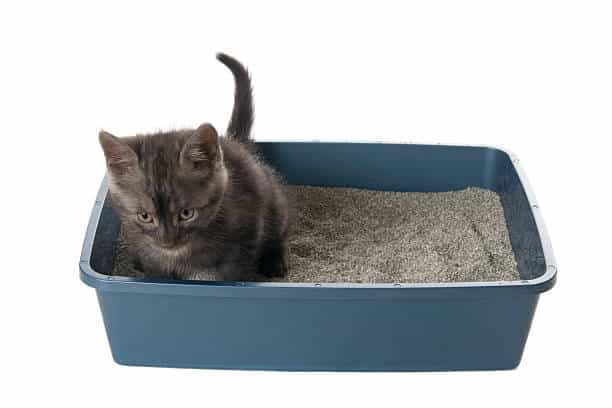Creating A Stress-Free Environment For Litter Box Training
Many pet owners struggle with litter box training their cats, but creating a stress-free environment is key to successful training. By providing a calm and comfortable space for your feline friend to do their business, you can help them learn proper litter box habits quickly and efficiently. In this blog post, we will discuss practical tips and strategies to set up your cat for success during litter box training, ensuring a harmonious environment for both you and your beloved pet.
Setting Up the Litter Box
Choosing the Right Location
To successfully set up a stress-free environment for litter box training, it is crucial to carefully select the location of the litter box. Choose a quiet and easily accessible spot that offers your cat privacy while using the litter box. Avoid placing the litter box near noisy appliances or high-traffic areas to prevent your cat from feeling anxious or uncomfortable.
Selecting the Appropriate Litter Box and Litter Type
Setting up the right litter box and choosing the appropriate litter type are necessary steps in creating a conducive environment for litter box training. Ensure the litter box is large enough for your cat to comfortably move around and has low sides for easy access, especially for kittens or senior cats. When opting for litter, opt for unscented, clumping litter as most cats prefer this type and find it easier to use.
Litter box placement and type play a crucial role in your cat’s litter box habits. It is important to provide a clean and inviting environment to encourage your cat to use the litter box consistently. By carefully selecting the right location and appropriate litter box and litter type, you can create a stress-free space that promotes successful litter box training for your feline companion.
Training Your Cat
Familiarizing Your Cat with the Litter Box
Even before you begin the actual training process, it’s important to familiarize your cat with the litter box. Place the litter box in a quiet, accessible location where your cat feels comfortable. Allow your cat to explore the area and get used to the smell and texture of the litter.
Positive Reinforcement Techniques
Any successful training regimen involves positive reinforcement. When your cat uses the litter box correctly, immediately praise and reward them with treats or affection. Consistency is key in reinforcing this positive behavior. Never punish your cat for accidents outside the litter box, as this can create stress and hinder progress.
Positive reinforcement techniques can also involve using a clicker to mark desired behaviors, helping your cat understand what they’re being rewarded for. Be patient and consistent with your praise and rewards to effectively train your cat to use the litter box.
Training
Training your cat to use the litter box may take time and patience. Be sure to provide a clean environment, scoop the litter box daily, and consider using unscented litter to avoid overwhelming your cat’s sensitive senses. Remember that each cat is unique and may require different training methods, so stay observant and adapt your approach as needed.
Maintaining the Litter Box
Keeping It Clean and Odor-Free
After successfully training your cat to use the litter box, it’s crucial to keep it clean and odor-free to encourage continued use. Scoop the litter box daily to remove waste and clumps. Regularly change the litter entirely, following the manufacturer’s guidelines. Consider using a litter box with a cover or investing in an odor-eliminating litter to keep unpleasant smells at bay.
Addressing Accidents and Setbacks
Litter accidents or setbacks may happen even with a well-trained cat. If your cat starts avoiding the litter box or having accidents, it’s necessary to address the issue promptly. Clean any accidents thoroughly with an enzyme-based cleaner to eliminate odors and discourage repeat incidents. Ensure the litter box is in a quiet, accessible location and free from any potential stressors that may be causing your cat to avoid it.
Common Issues and Solutions
Dealing with Multiple Cats
An vital aspect to consider when litter box training multiple cats is providing enough litter boxes for each cat. Each cat should ideally have its own litter box plus one extra to prevent territorial disputes or overcrowding issues. Additionally, make sure the litter boxes are placed in separate areas to give each cat privacy and reduce the chances of accidents.
Behavioral Problems and Medical Concerns
Solutions to behavioral problems or medical concerns impacting litter box use include observing your cat for signs of stress or medical issues. If your cat suddenly starts avoiding the litter box, it could be a sign of a medical problem such as a urinary tract infection. In such cases, a visit to the veterinarian is crucial to rule out any health issues. Behavioral issues like anxiety or stress can often be addressed by creating a calm and stress-free environment for your cat.
For instance, providing ample hiding spots, vertical spaces, and interactive toys can help reduce stress and anxiety in cats. Moreover, consider using pheromone diffusers or calming supplements recommended by your veterinarian to help alleviate behavioral issues that may be affecting litter box habits.
Summing up
With these considerations in mind, creating a stress-free environment for litter box training is imperative for a successful transition for your cat. By choosing the right type of litter box, ensuring its accessibility and cleanliness, providing privacy, and offering positive reinforcement, you can help your cat adjust to using the litter box with ease. Consistency and patience are key when it comes to litter box training, so it’s important to remain diligent and attentive throughout the process. By following these guidelines, you can create a calm and comfortable space for your cat to do their business, ultimately leading to a happy and healthy feline companion.






